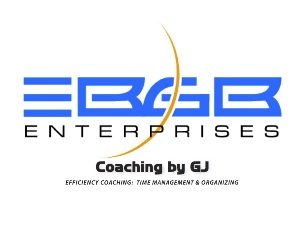Part 2:
Listing Your Responsibilities: separately from the recording activity, you should make time to review your job description, yourself if it is current and up to date, with your line manager if it is in need of a formal review. The purpose of this is to clarify what your role is and what are your formal responsibilities.
Listing Your Goals: this is another essential part of building that foundation as a professional, a manager, or specialist, you will have corporate level and operational level goals which your activity is meant to contribute to and help achieve.
Eliminating Or Reducing Unnecessary Activities: with the information that you have collected and considered, it is now time to take some action. In simple terms, this means identifying those activities, events, and periods of time, that are not contributing to you fulfilling your role and your responsibilities, and not helping you to contribute to the achievement of the corporate and operational goals nor your own personal goals. In your action plans, and your daily, weekly, monthly, lists (that we discuss below) you can then ensure that you do not continue wasting time and effort on any of these negative, unproductive, activities.
Prioritizing Activities: you may need to talk with your team, and-or with your line manager, possibly with internal or external suppliers and customers, to clarify and confirm what your priorities should be. This could be an opportunity to discuss how you could delegate some tasks to others, perhaps simply because you should not be doing them in the first place, perhaps as a developmental activity to help a team member learn new skills.
Preparing Action Lists: sometimes called To-Do lists. This is a relatively simple activity, where you look at the tasks and events of the coming day, week, and month, and list the activities that you intend to carry out, and when and for how long you will work on them. You will, of course, need to continually check that these activities match up with your role, responsibilities, and goals.
Starting Each New Day: in reality, this can mean taking action at the end of the previous day, your last task of the day being to plan your specific activities, perhaps as a simple action or to-do list, with times, perhaps as a list of priorities, that you intend to complete on the following day.
Building In Break Times: don’t fall into the trap of trying to work continuously, all day without stopping, working through all your breaks, and worse, not taking a lunch break. Overwhelming evidence shows that we need to have breaks and that without them our performance deteriorates dramatically the longer we go without.
Starting Each New Week: try to adopt the same approach as with daily planning. At the end of the last day of your working week, draw up an action plan for the next week, or at least for the first day in detail and the rest of the week in outline.
Strategic Planning: in parallel with the daily, weekly, and monthly planning, you should also have a background plan that focuses on medium-term and long-term objectives. These can be workplace performance targets, such as end-of-year financial results, but should also include softer, but equally important targets, such as the development of individuals and teams (not forgetting your own, personal, development objectives).
IN SUMMARY: without a structured approach to managing your time, it is inevitable that you will run into difficulties, miss important deadlines, not give enough attention to your career and personal development, not deal fully with the needs of your team members, allow others to dictate how you spend your time at work. The result is that work will become a burden, and your performance will deteriorate.
I will be returning in April 2021 with a new monthly format – “3rd Thursdays” … until then ~ Happy Spring!!
Gloria-Jean Brown
https://CoachingbyGJ.com
Resource Page link
Schedule 15-minute consult
gloriajean@coachingbyGJ.com
